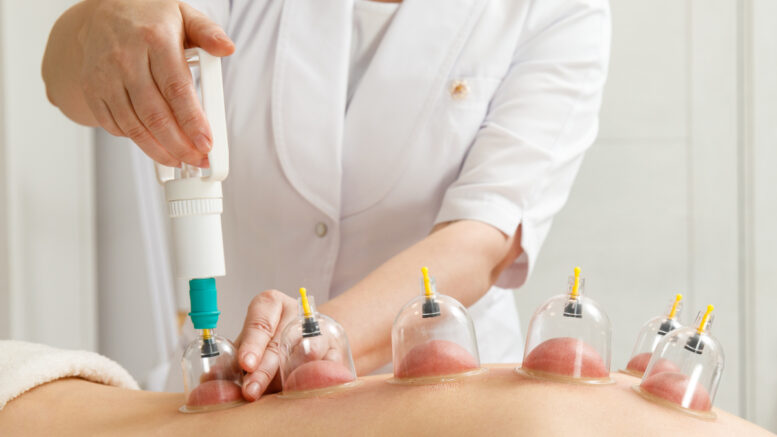Cupping therapy, an ancient practice that has gained renewed popularity in recent years, offers a holistic approach to wellness and healing. In this article, we will explore the fascinating world of cupping therapy, delving into its origins, techniques, and potential health benefits.
Unpacking the Technique: How Cupping Therapy Works
Cupping therapy is a traditional healing modality that has been used in various cultures for centuries. It involves creating a vacuum inside glass or silicone cups and placing them on the skin. The vacuum effect draws the skin and superficial muscle layers upwards into the cup, creating suction. Here are the key aspects of cupping therapy:
- Cupping Tools: There are two primary types of cupping therapy: dry cupping and wet cupping (also known as hijama). Dry cupping uses only suction, while wet cupping involves making small incisions on the skin before applying the cups to remove a small amount of blood.
- Techniques: Practitioners may use various techniques, such as stationary cupping (leaving the cups in one place), moving cupping (gliding the cups across the skin), or flash cupping (quickly applying and removing the cups). The choice of technique depends on the patient’s needs and the practitioner’s expertise.
- Benefits: Cupping therapy is believed to promote healing and relaxation by improving blood circulation, reducing muscle tension, and encouraging the flow of Qi (energy) in the body. It is often used to alleviate pain, boost the immune system, and address various health issues.
- Traditional Roots: Cupping therapy has deep historical roots in traditional Chinese medicine, as well as in Middle Eastern, European, and other cultures. It was traditionally used to treat a wide range of conditions, from musculoskeletal pain to respiratory disorders.
The Wide Spectrum of Health Benefits
Cupping therapy offers a multitude of potential health benefits, making it a versatile and sought-after treatment modality. Here are some of the advantages:
- Pain Relief: Cupping therapy is commonly used to alleviate pain, including back pain, neck pain, and muscle soreness. The suction created by the cups helps to relax tight muscles and improve blood flow to the affected areas.
- Muscle Relaxation: Athletes and individuals with muscle tension often turn to cupping therapy to promote muscle relaxation and recovery. It can be an effective complement to sports massage and physical therapy.
- Improved Circulation: Cupping therapy enhances blood circulation, which can aid in the delivery of oxygen and nutrients to tissues while removing waste products. This improved circulation contributes to overall well-being.
- Detoxification: Wet cupping, or hijama, is believed to help detoxify the body by removing impurities and excess blood. It may support liver and kidney function and improve overall detoxification processes.
- Respiratory Health: Cupping therapy can be used to address respiratory conditions such as asthma and bronchitis. By stimulating blood flow and reducing inflammation, it may help alleviate symptoms.
- Immune Boost: Regular cupping sessions can strengthen the immune system, making it easier for the body to fight off infections and illnesses.
- Stress Reduction: The relaxation induced by cupping therapy can help reduce stress and anxiety. Many individuals find it to be a calming and rejuvenating experience.
Cupping therapy is a time-tested healing modality with a wide range of potential health benefits. Whether you seek pain relief, muscle relaxation, improved circulation, or overall well-being, cupping therapy offers a holistic approach to healing.
